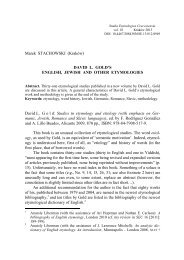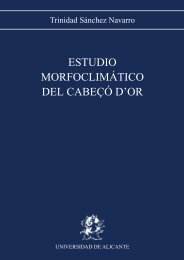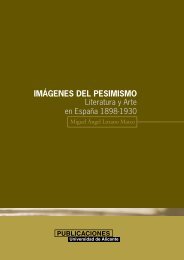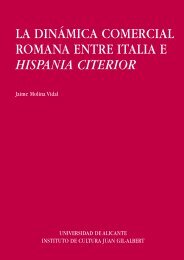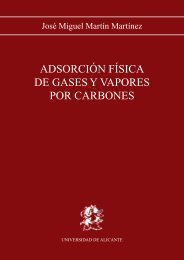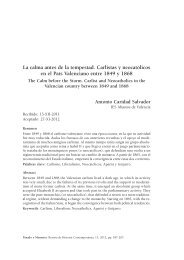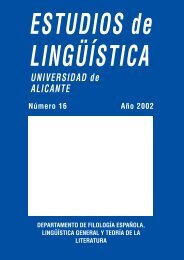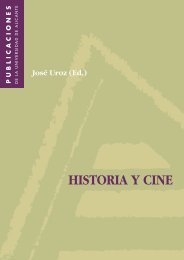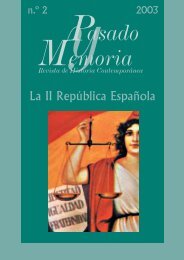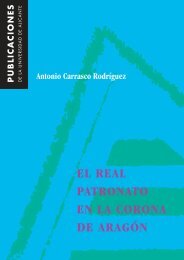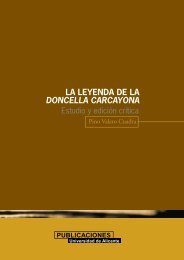English and Galician in the Middle Ages - Publicaciones ...
English and Galician in the Middle Ages - Publicaciones ...
English and Galician in the Middle Ages - Publicaciones ...
Create successful ePaper yourself
Turn your PDF publications into a flip-book with our unique Google optimized e-Paper software.
<strong>English</strong> <strong>and</strong> <strong>Galician</strong> <strong>in</strong> <strong>the</strong> <strong>Middle</strong> <strong>Ages</strong>:<br />
A Sociohistorical Survey<br />
Begoña Crespo García<br />
is not <strong>the</strong> case <strong>and</strong> <strong>the</strong> social role played by each language is<br />
clearly ascribed to a particular stratum, Taboada (1992: 409)<br />
calls it “ascription diglossia”: Castilian is used <strong>in</strong> formal contexts<br />
(upper, middle strata) whereas <strong>Galician</strong> <strong>in</strong> <strong>in</strong>formal ones<br />
(low strata).<br />
The speech communities under survey belong to two different<br />
types of diglossia. I would describe <strong>the</strong> diglossic situation <strong>in</strong><br />
Engl<strong>and</strong> as Fasold’s type 2 ‘superposed bil<strong>in</strong>gualism’ because<br />
of <strong>the</strong> low degree of similarity between <strong>the</strong> languages before<br />
<strong>the</strong> contact. Never<strong>the</strong>less, a higher degree of relatedness <strong>in</strong><br />
<strong>the</strong> case of <strong>Galician</strong> <strong>and</strong> Castilian turns this relationship <strong>in</strong>to<br />
a case of ‘classic diglossia’ as put forward by Ferguson because<br />
<strong>the</strong>y both were dialects of <strong>the</strong> Lat<strong>in</strong> family. Fur<strong>the</strong>rmore,<br />
<strong>the</strong> term ‘ascription diglossia’ describes properly <strong>the</strong> situation<br />
s<strong>in</strong>ce <strong>the</strong> use of ei<strong>the</strong>r Castilian or <strong>Galician</strong> is socially marked.<br />
The common Lat<strong>in</strong> ancestor <strong>and</strong> <strong>the</strong> social pressure exerted<br />
by a Castilian rul<strong>in</strong>g class to <strong>the</strong> detriment of <strong>the</strong> prestige of<br />
<strong>Galician</strong> could have restra<strong>in</strong>ed its evolution as an eloquent<br />
<strong>and</strong> prestigious language under <strong>the</strong> humanist trend <strong>and</strong> even<br />
later, up until <strong>the</strong> eighteenth century.<br />
4. Conclud<strong>in</strong>g remarks<br />
In conclusion, <strong>the</strong> socio-historical study of both speech communities<br />
<strong>in</strong> <strong>the</strong> <strong>Middle</strong> <strong>Ages</strong> reveals that a similar historical<br />
CONTENTS<br />
39



